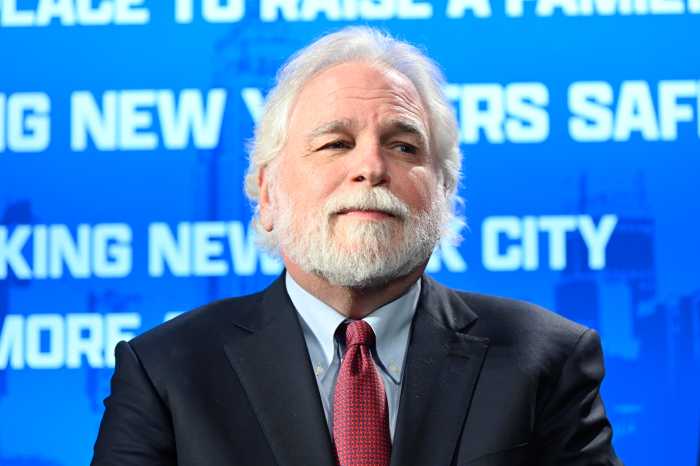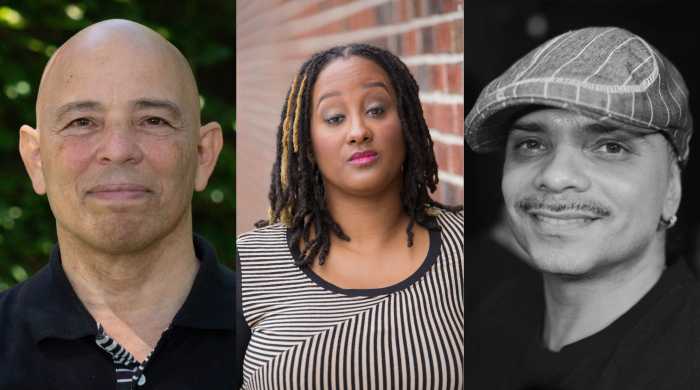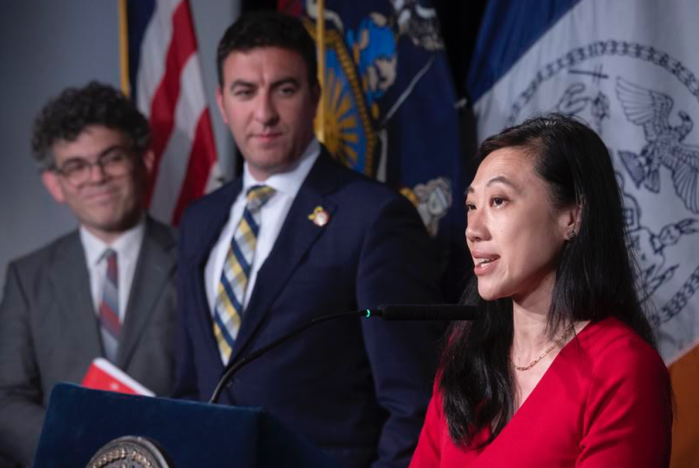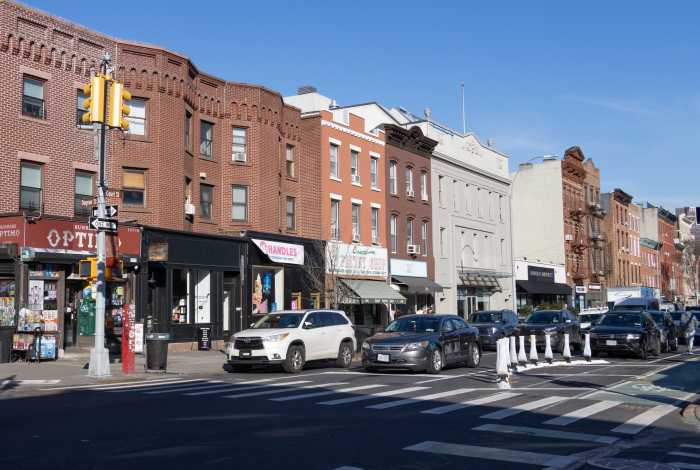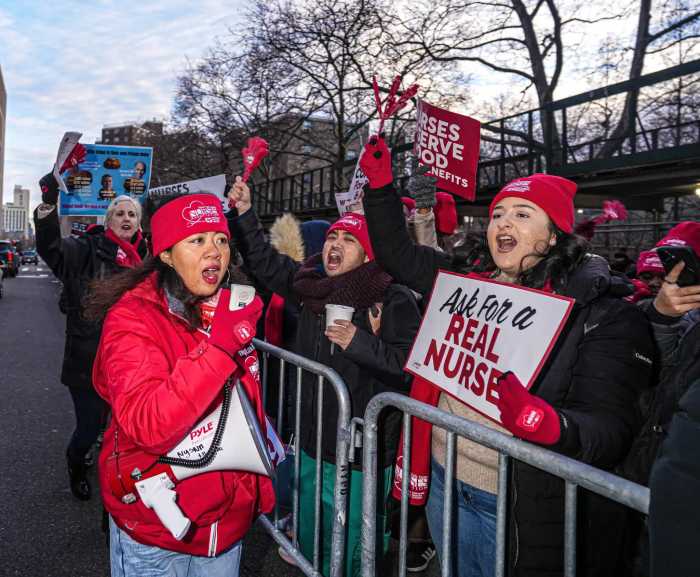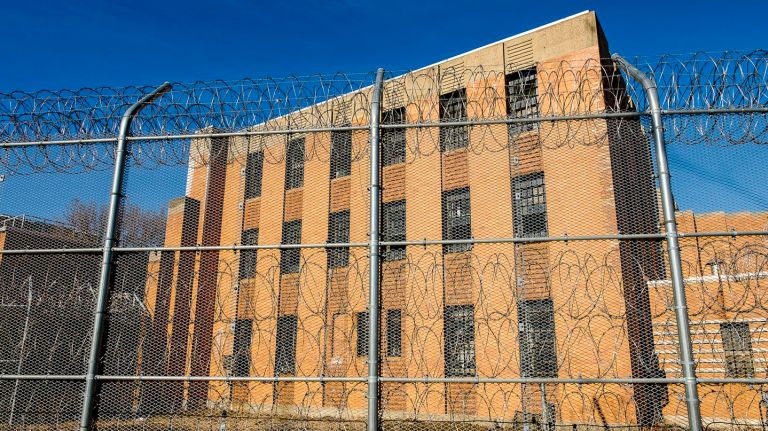
There are few things in this world that New Yorkers can agree on but closing Rikers Island is likely among them.
Mayor Bill de Blasio has a plan to shutter the scandal-ridden jail complex for good, and the City Planning Commission on Tuesday voted in favor of his controversial proposal to replace Rikers with smaller borough-based facilities.
“Closing Rikers Island is a key piece of creating a smaller, safer and fairer criminal justice system in New York City,” de Blasio says in a statement on the Roadmap to Closing Rikers website. “It is the right thing to do, but will take time, the effort of many and tough decisions along the way.”
The City Council Subcommittee on Landmarks, Public Siting and Maritime Uses held a hearing earlier in September on the proposal, which was attended by throngs of demonstators, some of whom said they want Rikers closed but do not support de Blasio’s plan for new jails.

Despite the opposition, the city’s faith leaders joined together on Thursday to voice support for the plan, arguing the need to close Rikers is too great. “The conditions found in Rikers Island robs the imprisoned of their dignity, denies them justice, and deprives them of mercy,” the group said.
Scroll down to learn more about the problems at Rikers Island, the plan to shut it down and the proposed community-based jails.
Why is Rikers Island so bad?
Rikers Island has become well known over the years for its corruption and “deep-seated culture of violence,” as described by the U.S. Department of Justice in 2014.
The issues plaguing the jail complex, which mostly houses inmates awaiting trial, became so dire that the city and Department of Correction entered a consent decree with the Department of Justice in 2015 that mandates the monitoring of inmates’ civil rights after a consistent pattern of abuse was proven.
Years later, the corruption and violence – perpetrated by both correction officers and inmates – persist.
On Aug. 9, a former city correction officer pleaded guilty to conspiring to accept bribes in exchange for smuggling contraband into a Rikers Island jail. In June, a correction officer was strangled by an inmate being held on a rape charge at the Anna M. Kross Center on Rikers Island, a union official said. The officer, a woman, was treated at a hospital and released.
When will Rikers Island close?
De Blasio’s plan to close Rikers Island is expected to be completed in 2026, 10 years after it was announced and long after he is out of office.
The George Motchan Detention Center was the first of the complex’s nine jails to close, the Mayor’s Office of Criminal Justice said in June 2018.
A panel led by former Chief Judge of the New York Court of Appeals Jonathan Lippman issued a report in April 2018 that suggested Rikers Island could be closed by 2024. The report cited the quick process in which locations for replacement jails were chosen; a shrinking inmate population; and new authority granted by the state to cut red tape in new jail design and construction as reasons for the three-year jump in suggested closure date.
What is the plan to close Rikers Island?
The city’s ability to shutter Rikers hinges on significantly reducing the daily jail population to at least 5,000.
When de Blasio first unveiled his plan to close the jail complex, the daily population was around 9,400. Through a series of citywide programs and initiatives, the average daily population has dropped to 7,400, as of July.
The mayor’s office attributes the steady decrease to several factors, including a reduction in low-level crime arrests, refocused law enforcement, the citywide Supervised Release program and expanded diversion programs.
As of Aug. 30, more than 14,400 people had gone through the Supervised Release program since it was introduced citywide in 2016, according to the mayor’s office.
“These reductions result from a paradigm shift in our approach to public safety, with New York City at the leading edge of what works,” said Mayor’s Office of Criminal Justice Director Elizabeth Glazer. “New Yorkers are committing fewer crimes, police are arresting less often, and our courts are releasing more people, resulting in a dramatic decrease in the numbers entering the jail system—all while New York City remains the safest big city in the United States.”
While not technically part of the 10-year plan to close Rikers, the Raise the Age law that went into effect in October 2018, which transferred all 16- and 17-year-olds to juvenile detention centers, has also helped reduce the daily population. In October, all 18-year-olds will be moved to juvenile detention centers.
What will replace Rikers Island?
With the passage of state bail and other reforms this year, the city now projects it can reduce the incarceration population to 4,000, down from its initial estimate of 5,000. With the revised numbers in mind, the city has proposed to open four new 1,150-bed jails in Queens, Brooklyn, Manhattan and the Bronx.
Existing detention facilities in Manhattan, Queens and Brooklyn would be remodeled in a more modern, humane design — a model that also would be used to construct a new jail at an NYPD tow impound lot in the Bronx.
The cells where inmates are housed would be designed to bring in more sunlight, offer guards better observation points and include space for programming. The Queens jail would be outfitted to handle pregnant inmates and those with more severe medical needs.
The city also proposed to include neighborhood-friendly amenities like affordable housing, ground-floor retail and community spaces in the jail designs.
The Bronx jail plan in particular includes a proposed residential building that could offer more than 200 apartments in addition to ground-floor retail space. The proposal requires a rezoning of the western portion of the site.
Where will the new jails be located?
- 320 Concord Ave., in Mott Haven, the Bronx
- 275 Atlantic Ave., in Downtown Brooklyn
- 126-02 82nd Ave., in Kew Gardens, Queens
- 125 White St., in lower Manhattan
Why isn’t Staten Island getting a new jail?
Staten Island’s comparatively small jail population — about 250, as of August 2018 — does not warrant a new facility, according to the de Blasio administration.
Inmates from Staten Island would be housed at the new Brooklyn facility instead.
Are there benefits to borough-based jails?
The de Blasio administration believes that housing inmates closer to courts and their homes will make New York City’s criminal justice system “smaller, safer and fairer.”
The jails also would be paired with on-site supportive services to help inmates get their lives back on track and reduce recidivism rates.
How much are the new jails going to cost?
The city budgeted $8.7 billion for the facilities but it does not have precise cost estimates yet.
Is there any pushback from the communities where the jails are being proposed?
Since announcing the planned locations of the borough-based jails in February 2018, the de Blasio administration has come under fire for a lack of transparency in its decision-making.
Assemb. Yuh-Line Niou, who represents parts of lower Manhattan, chastised the de Blasio administration last year after it changed the site of the borough’s proposed jail from 125 White St. to 80 Centre St. without any community input. Businesses and homeowners in lower Manhattan also banded together as a coalition to oppose the proposal.
Citing unforeseen logistical challenges at 80 Centre St., the city announced on Nov. 28 that it would revert back to its original plan to house inmates at a remodeled 125 White St. Mayoral spokeswoman Natalie Grybauskas said the Manhattan Detention Center on White Street “better addressed their needs without the costly challenges created by using 80 Centre.”
The White Street location isn’t without controversy, either. The community group Neighbors United Below Canal opposes the jail.
Bronx Borough President Ruben Diaz Jr., his constituents and community advocates have rallied against the proposal on several occasions, and a lawsuit filed by the Diego Beekman Mutual Housing Association seeks to stop the jail plan in its tracks.
Diaz put forth an alternative site for the Bronx jail and has repeatedly urged the de Blasio administration to halt the process.
“Rikers Island must be closed, but the city cannot ignore community input and steamroll neighborhoods through the land-use process in order to do so,” he said in May.
In response to the criticism, the Mayor’s Office of Criminal Justice has said that the administration worked closely with lawmakers and other stakeholders in determining the locations for the jails.
Will the communities be able to weigh in on plans?
The city held four public hearings – one in each borough – in fall 2018. The City Planning Commission also held a hearing on July 10, which saw a smattering of testimony both for and against the proposed jail sites, and the City Council Subcommittee on Landmarks, Public Siting and Maritime Uses heard from constituents on Sept. 5.
What are the next steps
The City Planning Commission certified the land use review process for the jail locations in March, which sent the proposal to the community boards where the jails would be built. All four community boards voted against the proposal, but the decisions were advisory and did not keep the plan from moving forward.
The borough presidents then issued opinions in favor or against the plan, but again the decisions were advisory.
The City Planning Commission approved the plan 9-3 on Tuesday. The proposal is now in the hands of the City Council Subcommittee on Landmarks, Public Siting and Maritime Uses before it goes to a full council vote.
With Sarina Trangle, Ivan Pereira and Matthew Chayes
Read more: James Dolan Threatens Alcohol Ban at Rangers Game




